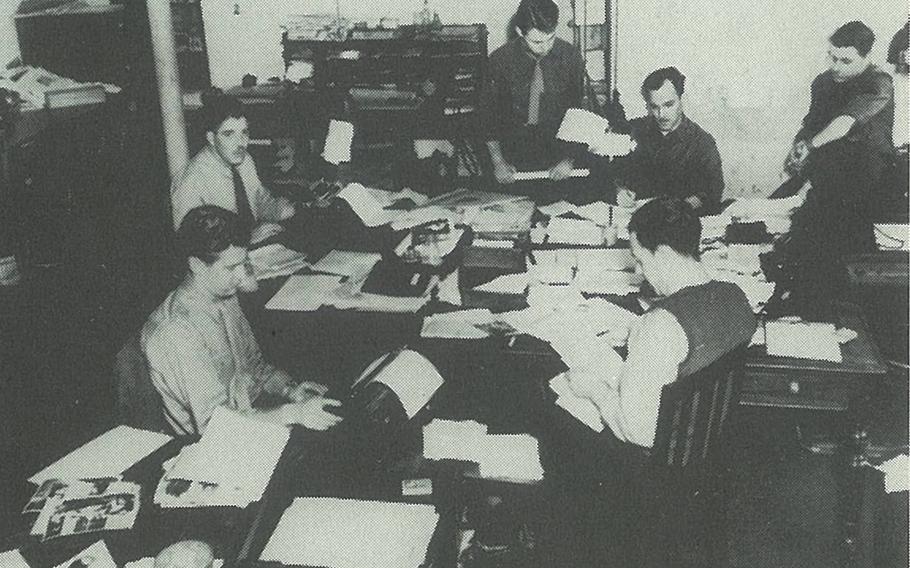
This photo shows the Stars and Stripes London office in 1944. ()
Gen. George C. Marshall, Chief of Staff of the Army who is in the British Isles inspecting United States Forces, Friday issued the following statement upon the publication of the first issue of The Stars and Stripes of 1942:
“Like any other veteran of the A.E.F. in France, I am delighted to welcome the new version of The Stars and Stripes. By a fortunate coincidence I happen to be in the British Isles as it comes off the press.
“‘I do not believe that any one factor could have done more to sustain the moral of the A.E.F. than The Stars and Stripes,’ wrote General Pershing of this soldier newspaper. We have his authority for the statement that no official control was ever exercised over the matter which went into The Stars and Stripes.”
A Symbol
“From the start the Stars and Stripes existed primarily to furnish our officers and men with news about themselves and their comrades and the homes they had left behind across the sea. A soldier’s newspaper, in these grave times, is more than a morale venture. It is a symbol of the things we are fighting to preserve and spread in this threatened world. It represents the free thought and free expression of a free people.
“I wish the staff every success in this important venture. Their responsibility includes much more than the publication of a successful paper. The morale, in fact the military efficiency of the American soldier in these Islands, will be directly affected by the character of The Stars and Stripes of 1942.”
General Marhsall, in addition to inspecting United States troops in the British Isles, has been meeting with high British officials on various aspects of the war. He was accompanied from the United States by Harry Hopkins, who is representing the president in talks on supply matters.
Both men held a press conference shortly after their arrival April 8 and both expressed themselves as confident that the American war effort rapidly was reaching high gear.
“In the United States,” General Marshall said. “We are in the middle of a full mobilization. Last month three new divisions came into being. By summer there will be four divisions a month, with arrangements providing for the induction of something like 150,000 men a month.
“There are great opportunities in the United States for training because over there we are not so congested.”
Asked if the American forces would not be “cramped when they get to Europe.” General Marshall smiled and said, “We want to expand over here.”
This article appears exactly as it did in the inaugural edition of the Stars and Stripes.